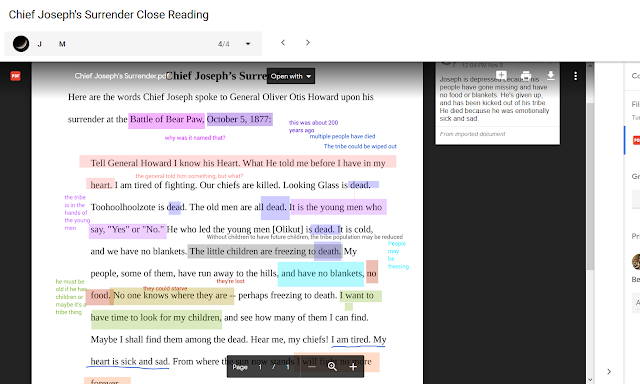Experiment
Choose a grade-level-appropriate standard for experimentation. See here, here, here, and here for some ideas.
I. Research the topic.
II. What do you want to know? Create a well-thought-out Guiding Question that reflects the Independent and Dependent Variables.
III. Plan and write your Proposal:
D. Materials: List everything you need to conduct your experiment. Select appropriate tools (e.g., thermometers, meter sticks, balances, graduated cylinders, etc.) to make quantitative (measurable) observations.
E. Procedure: List step-by-step exactly what you will do.
IV. Conduct the experiment. Record/measure in detail what happens.
V. Complete the write-up:
I. Research the topic.
II. What do you want to know? Create a well-thought-out Guiding Question that reflects the Independent and Dependent Variables.
III. Plan and write your Proposal:
A. Purpose/Problem/Guiding Question: Develop a testable question: What do you want to know? Include the relevant 5th Grade Standard(s).
B. Research: Find information on the topic. Use at least three sources. Cite them specifically.
C. Hypothesis: Predict what will occur in your experiment. Identify:
B. Research: Find information on the topic. Use at least three sources. Cite them specifically.
C. Hypothesis: Predict what will occur in your experiment. Identify:
Independent Variable: The one thing you will change for each test subject. (Test subjects must be in all other ways the same!)
Dependent Variable: What you will measure (the effect of the Independent Variable on each test subject)
Control Group: The test subject(s) that does not receive any of the Independent Variable
Dependent Variable: What you will measure (the effect of the Independent Variable on each test subject)
Control Group: The test subject(s) that does not receive any of the Independent Variable
D. Materials: List everything you need to conduct your experiment. Select appropriate tools (e.g., thermometers, meter sticks, balances, graduated cylinders, etc.) to make quantitative (measurable) observations.
E. Procedure: List step-by-step exactly what you will do.
IV. Conduct the experiment. Record/measure in detail what happens.
V. Complete the write-up:
F. Results: Report exactly what you observed. Use appropriate tools to measure what happens. Show that data using the appropriate graphic representations (including charts, graphs, and labeled diagrams).
G. Conclusion: Discuss: Why did the experiment turn out the way it did? What can you conclude (say is true) based on the data? What would you do differently next time? What further research is needed to better understand the topic?
G. Conclusion: Discuss: Why did the experiment turn out the way it did? What can you conclude (say is true) based on the data? What would you do differently next time? What further research is needed to better understand the topic?
VI. Compose an Abstract summarizing the important points of each part of your experiment.
VII. Display your information attractively on a tri-fold board (28" x 40"), as seen here and here:
VII. Display your information attractively on a tri-fold board (28" x 40"), as seen here and here:
 | ||||
| An example of how to display your research |
 |
| Large headings, typed or neatly-inked text, and color add visual impact to your display. |
Do your best work. It should be:
-neat
-in full-color, free of (plain) pencil and no crayon
-entirely your own work
-spelled, punctuated, and capitalized properly
-free of any plagiarism
-in full-color, free of (plain) pencil and no crayon
-entirely your own work
-spelled, punctuated, and capitalized properly
-free of any plagiarism
***********************************************************************
Structure and Properties of Matter
5-PS1-1. Develop a model to describe that matter is made of particles too small to be seen.
5-PS1-2. Measure and graph quantities to provide evidence that regardless of the type of change that occurs when heating, cooling, or mixing substances, the total weight of matter is conserved.
5-PS1-3. Make observations and measurements to identify materials based on their properties.
5-PS1-4. Conduct an investigation to determine whether the mixing of two or more substances results in new substances.
Matter and Energy in Organisms and Ecosystems
5-PS3-1. Use models to describe that energy in animals’ food (used for body repair, growth, motion, and to maintain body warmth) was once energy from the sun.
5-LS2-1. Develop a model to describe the movement of matter among plants, animals, decomposers, and the environment.
5-LS1-1. Support an argument that plants get the materials they need for growth chiefly from air and water.
Earth’s Systems
5-ESS2-1. Develop a model using an example to describe ways the geosphere, biosphere, hydrosphere, and/or atmosphere interact.
5-ESS2-2. Describe and graph the amounts and percentages of water and fresh water in various reservoirs to provide evidence about the distribution of water on Earth.
5-ESS3-1. Obtain and combine information about ways individual communities use science ideas to protect the Earth’s resources and environment.
Space Systems: Stars and the Solar System
5-PS2-1. Support an argument that the gravitational force exerted by Earth on objects is directed down.
5-ESS1-1. Support an argument that differences in the apparent brightness of the sun compared to other stars is due to their relative distances from the Earth.
5-ESS1-2. Represent data in graphical displays to reveal patterns of daily changes in length and direction of shadows, day and night, and the seasonal appearance of some stars in the night sky.
Engineering Design
3-5-ETS1-1. Define a simple design problem reflecting a need or a want that includes specified criteria for success and constraints on materials, time, or cost.
3-5-ETS1-2. Generate and compare multiple possible solutions to a problem based on how well each is likely to meet the criteria and constraints of the problem.
3-5-ETS1-3. Plan and carry out fair tests in which variables are controlled and failure points are considered to identify aspects of a model or prototype that can be improved.




Comments